Creating a wildlife pond can be as easy or as elaborate as you want it to be. Either way, this water feature will attract wildlife to your yard. From birds to foxes to frogs, they’ll all be visiting your yard in no time. A wildlife pond is a great companion to your butterfly garden.
It is time to re-wild our yards and to help our wild neighbors by creating a garden pond that is wildlife friendly.
Making a wildlife pond is one of the elements when you are doing wildlife gardening. A natural pond and a small waterfall is a great way to give drinking water to your backyard wildlife without depending on a bird bath. Our backyard birds take baths at one of our ponds daily, while owls come to drink, and raccoons wash their little paws.
*This article may contain affiliate links. We receive a small commission at no extra cost to you.*
You will want to know who is enjoying your backyard pond, so we recommend you get yourself a trail camera. You’ll be surprised to see who visits your pond while you are not watching!
The Story of Our Wildlife Pond
We built our first wildlife pond exactly a year ago, at the beginning of spring. Early spring is the perfect time to build your pond, as many types of wildlife are just starting to become active again. Frogs will be looking for water to breed in, and you don’t want to miss that!
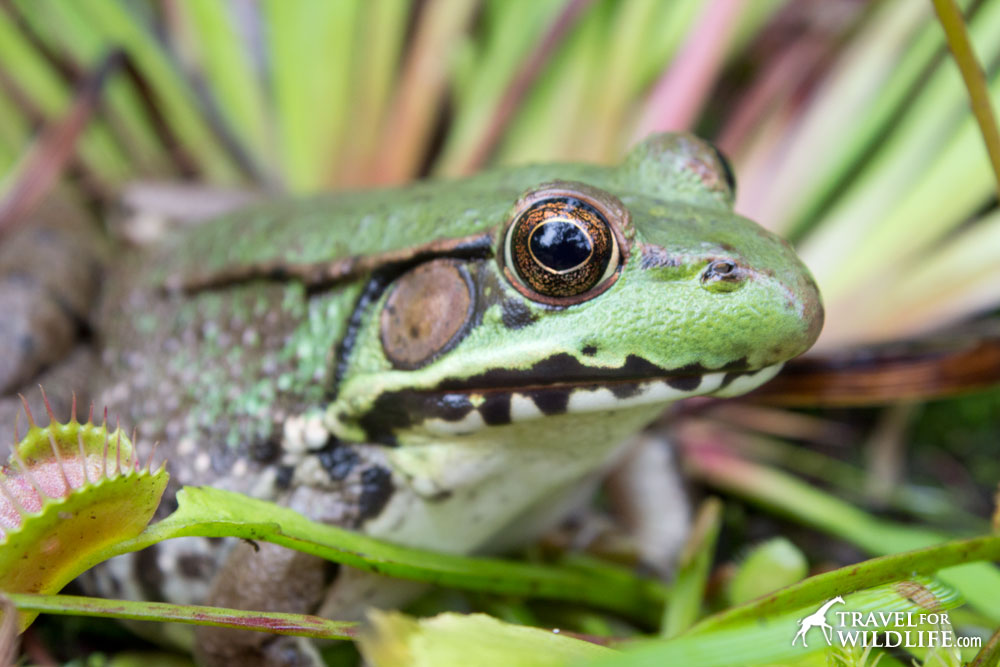
Our pond took several days to finish as it has two different levels and a waterfall. A simpler pond with just one level will take less time to finish. You can create your wildlife pond in as little as 2 days.
Our first big surprise was that only a few weeks after finishing the pond we began to notice a few water snails crawling across the pebbles on the bottom. How did they get in there? Then the frogs decided to move in. Squirrels and birds used it as a waterhole and bathtub. Little did we know that even salamanders had moved in and owls were enjoying the pond at night. We got a great surprise one day when a family of screech owls appeared on our camera trap video footage. They were drinking from our pond the previous night!
In the middle of the summer we realized that frogs loved our pond so much that they had decided to breed in it. One day hundreds of little frog eggs appeared attached to the water lilies. Soon they became tiny tadpoles. They were very shy and would tend to hide when we came around, but eventually the bigger ones would come up to our fingers and suction us with their little mouths. Then, just like that, they were gone. They turned into young tree frogs and dispersed.
What You Need to Build a Wildlife Pond
Here area the pond supplies that we used to build our pond:
- Pond liner
- Pump Filter Kit:
choose your kit taking into account how big your pond will be. Check the Maximum Capacity (gallons) of the different pumps.
- Pump shield (prevents debris from clogging your pump)
- Ceramic Frog Spitter
- Decorative River Pebbles / Accent Stones
- Sand
- Water plants like lilies and water lettuce. Pond plants will provide shelter for frog eggs and tad poles. Since building our pond we have decided to take out the water lettuce as it spreads like crazy. Try to choose native plants as these will be the most beneficial to your backyard wildlife.
- A ceramic pot with carnivorous plants (or other bog plants) for dragonflies to rest on. Carnivorous plants are native where we live. Frogs also like to rest on the peat.
- Solar powered bird bath fountain pump. While these are designed for bird baths, you can also try them at your pond.
If your winters are cold, consider installing a Smartpond Pond Aerator which will prevent the pond from freezing. We have a small pond with a pump and an aerator which never froze this winter, while our slightly larger pond (which has only a pump and waterfall) froze completely solid. The difference is that the water in the pump line will freeze in very cold temperatures and block the pump, while the air in the aerator tube can never freeze! However, our frogs always survive til spring, even when the surface freezes solid.
If you are building a large pond, you can still prevent foul odor, algae growth, mosquitoes breeding, and even the death of your fish by installing a large pond aerator. Take a look at Aquascape Pond Aerator kit and keep your wildlife pond and your critters healthy and happy.
How to Build A Wildlife Pond (step by step)
1 – Choose a location for your wildlife pond
First, find the location for your new pond and use a rope or string to map the shape of it. It can be any shape you want, but a simple oval or a kidney bean shape both work well.
2 – Dig!
Start digging! Keep in mind that the pump filter kit needs to be under water, so the deep end needs to be deep enough to house it. Our pond’s deep end is 2.5 to 3 feet deep.
3 – Create different depths for different types of wildlife
Since you are building a pond for wildlife, try to give it both a deep end and shallow end with a sloped entry. The deep end is good for salamanders, frogs, or fish to swim and hide in, and the shallow end provides a perfect spot for drinking and bathing. Birds and squirrels love it!
Our frogs also love the shallow water end of the small pond, we find them every morning sitting on the “beach” sand. Half way in the water, half way out!
4 – Create a beach for easy access into your wildlife pond
Another thing to keep in mind is that some animals need to be able to get in and out safely to avoid drowning. Make this easy for them by creating a “beach” in the shallow end. We did this with a sloped ramp of small pebbles leading in. If your pond doesn’t have a beach in it consider buying an animal pool escape ramp so your critters can use it as a raft and jump out of the pond safely. You can also use a log!
5 – Pour a layer of sand
Once you have the desired shape and depth, layer a couple inches of sand across the bottom. This will smooth the bottom of the pond and will prevent any possible punctures in the liner. You can get your sand at any home improvement store. Get it here.
6 – Install the pond liner.
The liner has to cover the entire pond plus at least a foot of overhang around the edges. As an alternative, if you want a small wildlife pond, you can use a pre-formed plastic pond liner.
7 – Fill the wildlife pond with water
Now is a good time to make sure the sides of your pond are level. Add or subtract soil as necessary around the edges.
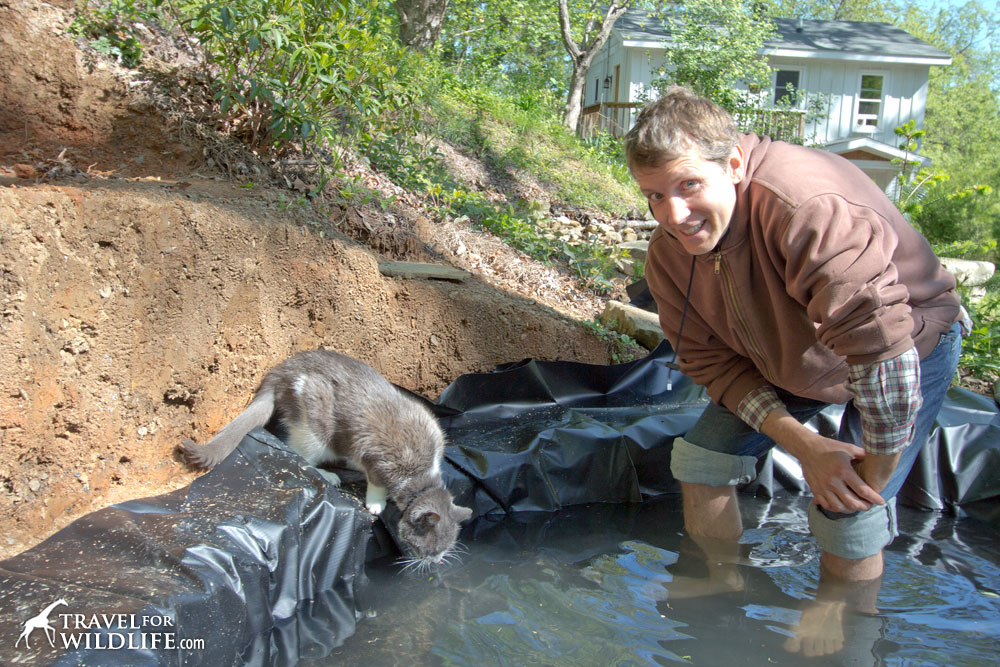
8 – Secure the pond liner
Place stones around the liner to secure it. We mixed it up a little bit, with large rocks, and small rocks. This creates a few holes that have become a favorite for chipmunks, frogs, and toads. Fill the pond with water and let it sit overnight to test for possible punctures. If the pond doesn’t leak, you can finish building it!
9 – Place the river stones on the ramp to create a beach.
This is a very important step in creating a wildlife pond. You need a backyard pond that is easy accessible and easy exit too. The last thing you want it to find a dead animal just because it couldn’t get out. We use a beach and some plants to create natural ramps for easy access/exit.
10 – Installing the pump filter kit
Install the pump filter kit in the deep end and run the tube to either a pond spitter (like our frog) or a waterfall, or just let it pump straight to a fountain above the pump.
11 – Landscaping your wildlife pond
Finish the landscaping by placing native water plants (to create shelter for the critters), a pot with bog plants so dragonflies have a resting place and plant a few bushes close to the pond so birds have a perch.
Congratulations! You have an all-purpose wildlife service station in your backyard! Let us know what kind of animals you’ve seen in your backyard pond!
Like this article? PIN IT!
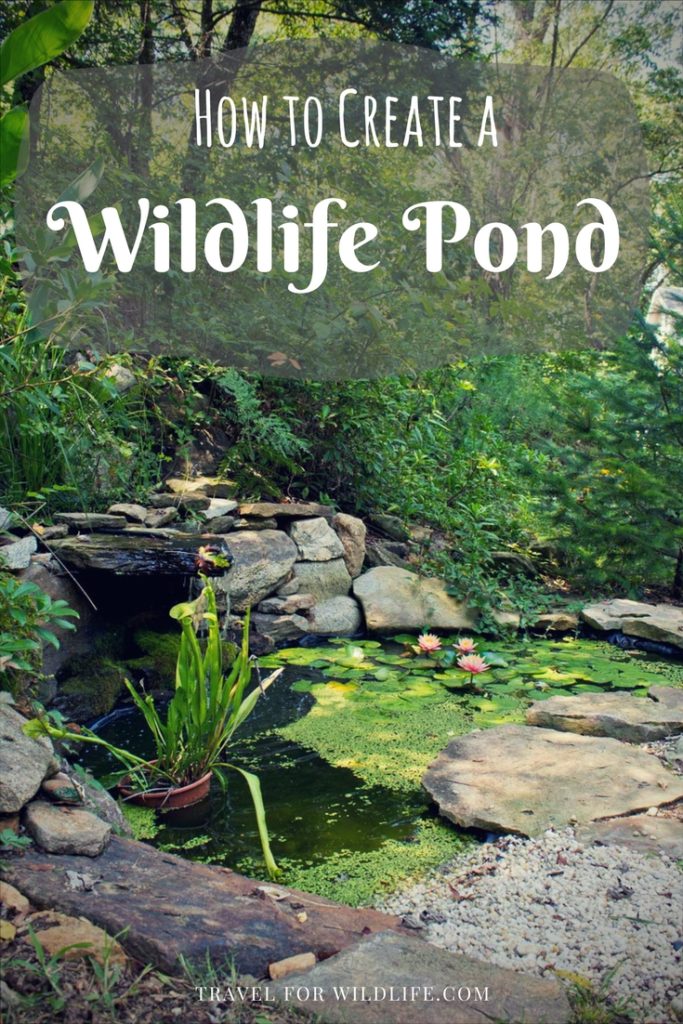

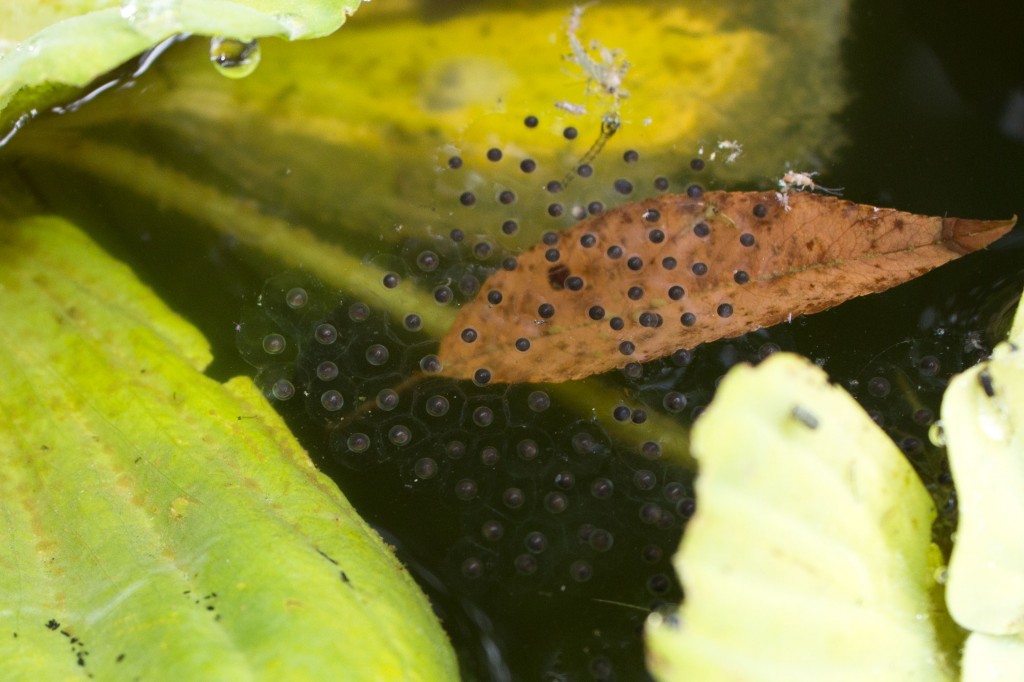
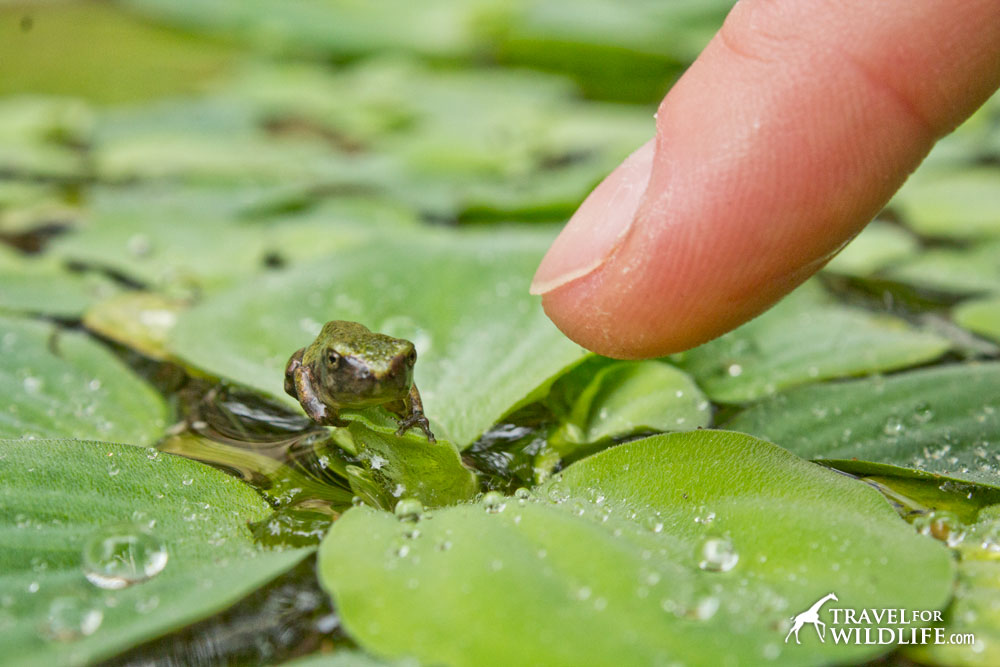
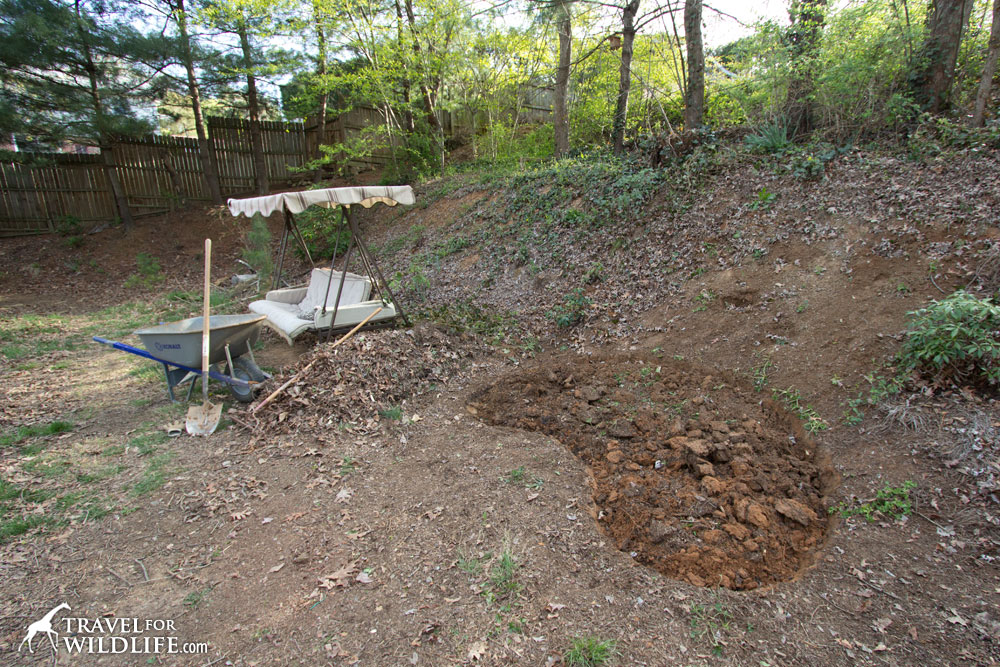
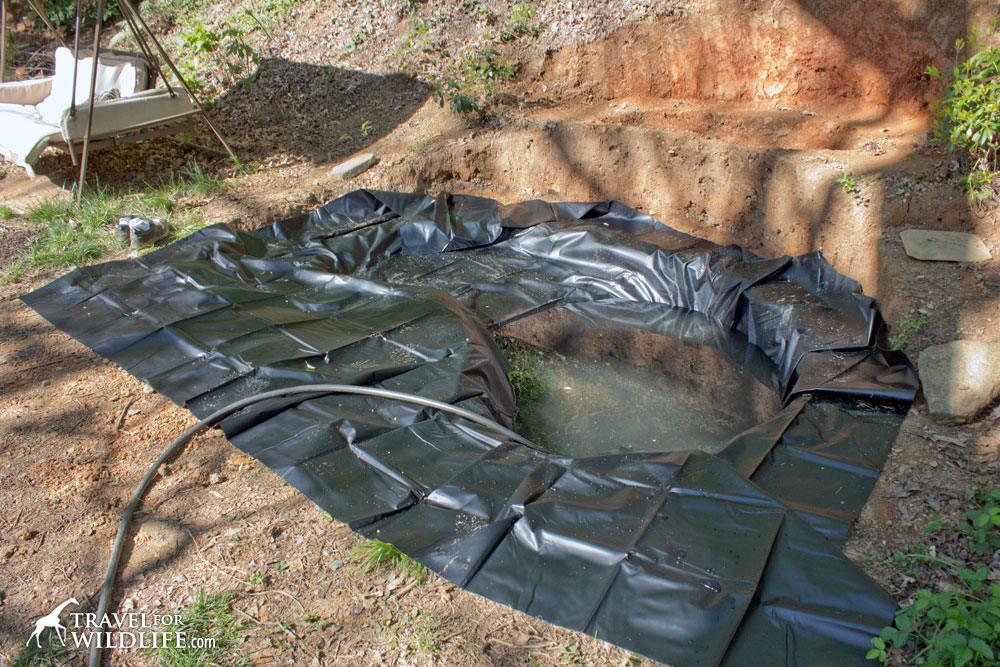
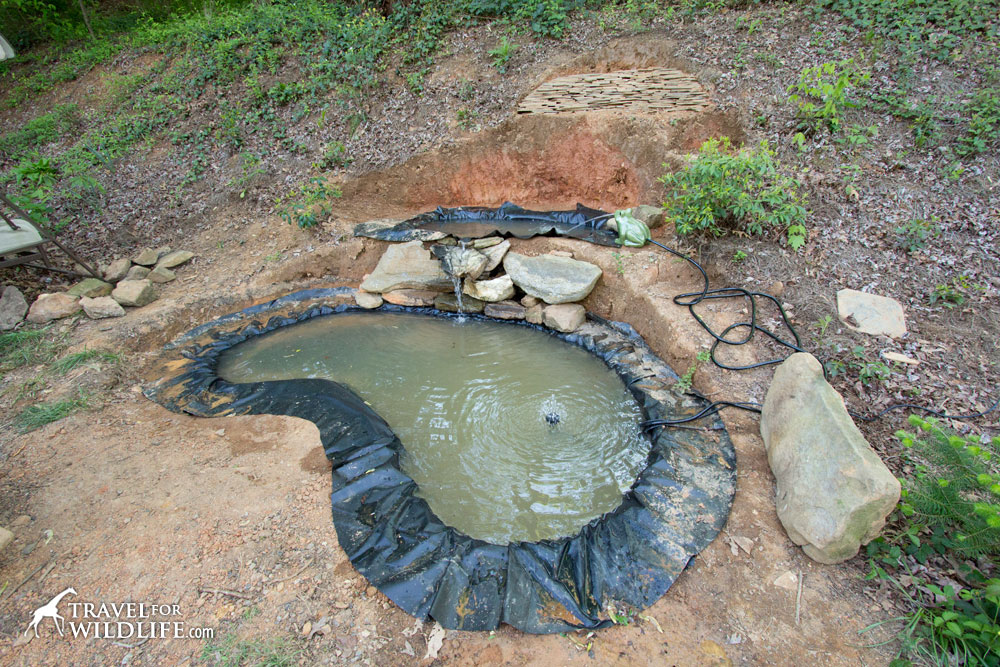
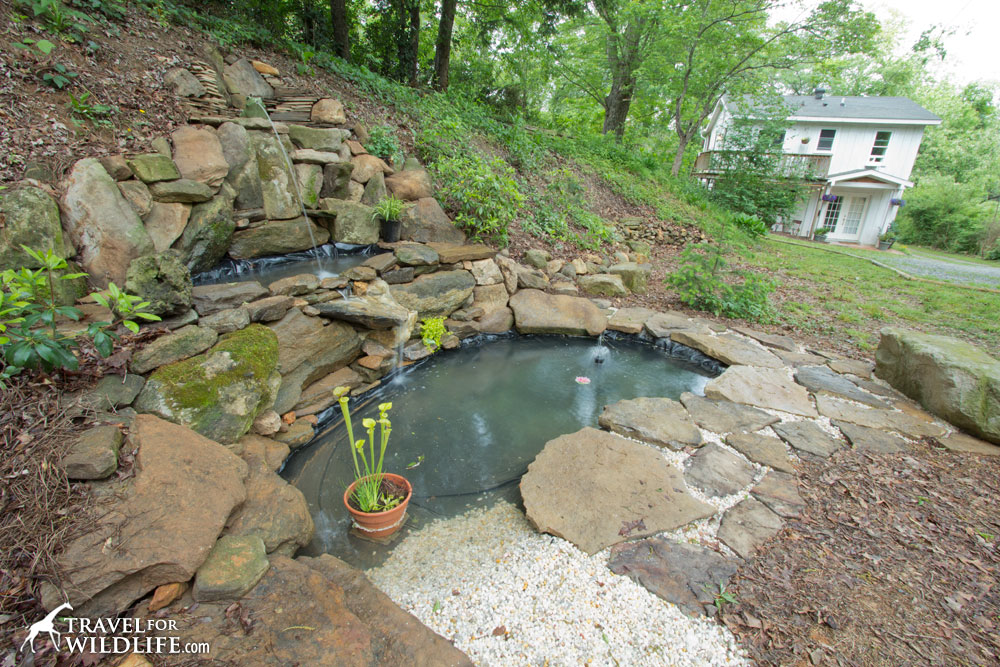
Koibids
Thursday 8th of March 2018
Nice post!! Thanks for sharing this post, you have explained well information about How to Create a Wildlife Pond.
Geosynthetic Systems
Tuesday 17th of October 2017
Thanks for sharing this post. All the essentials are well explained and informative to build a wildlife pond. This is a great tutorial for beginner.
Pond Liner
Wednesday 3rd of June 2015
Nice post. I have a pond maintained by ponpro2000. Their liner is eco friendly and do not harm the animals inside the pond.